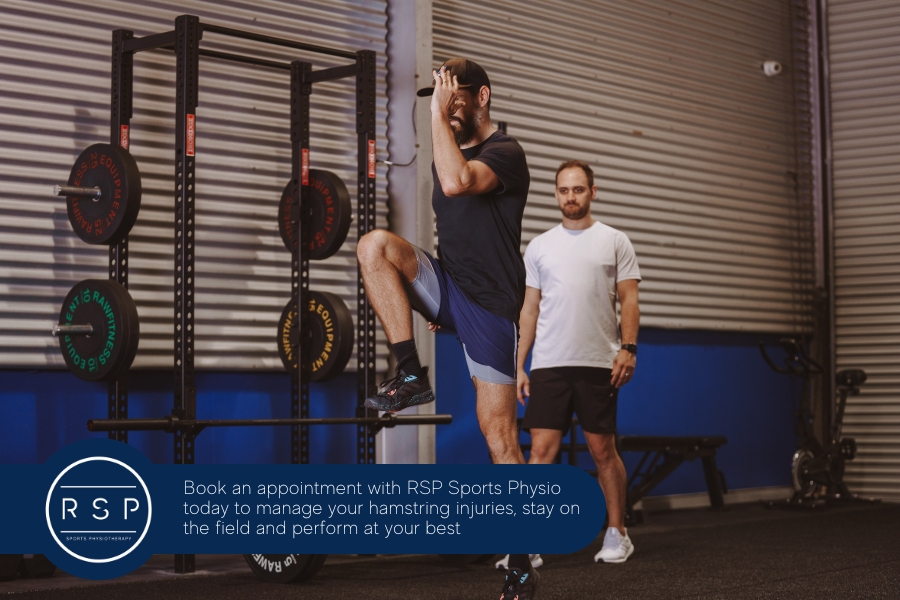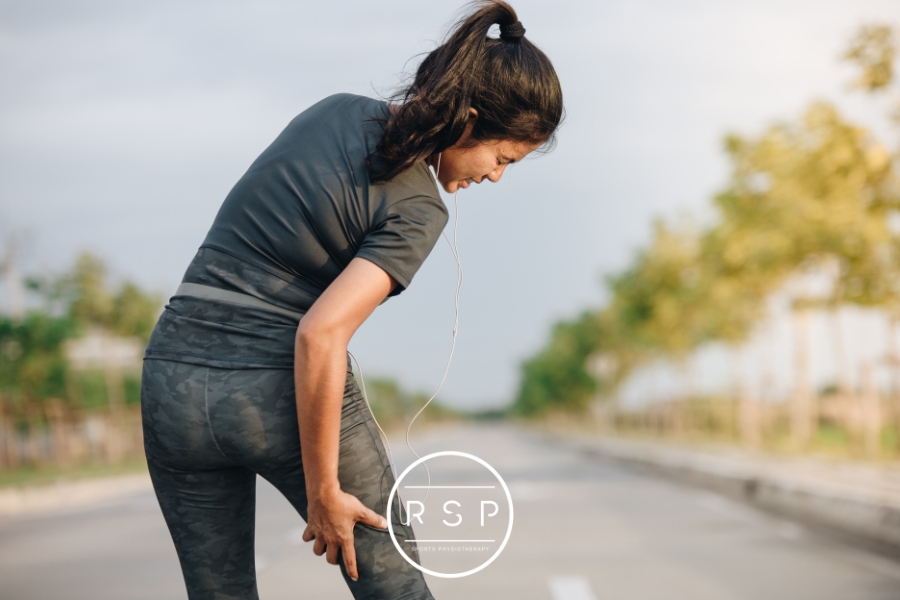Hamstring stains are one of the most common injuries in sport. They account for one of the main causes of lost playing time and approximately one third of reinjuries occur within the first few weeks of returning to sport. So what can we do about it? In this blog we will look into the best ways to rehab from a hamstring injury and prevent future injury and time off the field.
Acute management
Immediately following a suspected hamstring strain the aim is to protect and facilitate early healing before you are able to get the injury assessed.
Compression (using a compression bandage or tape) and elevation is helpful to prevent excessive swelling. Early activation and loading is important. Complete avoidance of movement is not recommended. You should let pain be your guide to doing your daily activities, such as walking, to prevent muscle atrophy and disuse.
Don’t delay assessment and rehab. Physiotherapy assessment and early rehab of hamstring strains should start within the first five days of injury. Muscles are able to heal relatively quickly with the appropriate stimulus, so early assessment and rehab can help you progress further faster.
Types of hamstring injury
There are at least two different types of hamstring stairs; type I and type II. Type I hamstring strains are the most common and occur during high speed running. These usually present with a bigger functional decline acutely (swelling, pain, loss of function), however usually take less time to return to sport. Type II strains occur with excessive lengthening of the muscle in movements where the hip is bent and the knee is straightened and can occur at slower speeds. Type II strains are usually located higher up the thigh and can also involve the proximal tendon, leading to slower recovery times.
A physiotherapy assessment including the mechanism of injury, location of pain, past injury history, strength and range of motion deficits of the lower limb and in some cases MRI imaging, is used to determine the type and severity of a hamstring muscle strain. Once we know the type and severity of injury we are dealing with, a tailored rehabilitation program can be developed to return to play.
Prognosis and progressing through rehab
One of the first things you want to know after sustaining a hamstring injury – how long until I can get back to playing?
The type and severity of strain will play a large role in determining how long rehabilitation will take, which is why a thorough assessment early on is important. As a general guide, time to walk and jog pain-free have also been shown to be strong predictors of time to return to play.
For jogging, returning to pain free jogging within 1-2 days, predicts a less than 2 week return to play, whereas taking longer than 5 days to return to pain free jogging predicts more than 4 weeks to return to play.
Return to play prognoses are not based on time alone, progression through a rehab program is also dependent on meeting key functional and clinical criteria. At RSP, our clinic is equipped with an in-house gym and full VALD suite to effectively measure progression and we follow clinical criteria backed by evidence to return to sport.
What can I expect from a rehab program?
Once you are back to walking pain free and are able to produce force through the injured muscle, you can expect to commence low-intensity running and a graduated strengthening program that addresses any deficits associated with the injury.
Several risk factors have been found to be associated with hamstring injury, including poor flexibility, reduced strength, altered lumbo-pelvic control and fatigue. Assessment and consideration of these factors when developing a rehab program has been shown to improve performance and reduce recurrence of injury. Regular reassessment against progression criteria is essential for helping you stay on track and having small goals to work towards.

Preventing re-injury
At RSP we don’t just look to get you back on the field, we aim to go beyond to help you prevent re-injury and maximize your performance. Continuing with a sports specific injury prevention program that includes eccentric strength training, balance and proprioception exercise and sports specific training can help prevent the recurrence of hamstring injuries and further time lost to injury.
For athletes looking to prevent re-injury, RSP can also provide pre-season and in-season athletic screening to monitor strength and performance so that niggles don’t progress into injury.
References
Brukner, P., & Khan, K. (2017). Brukner & Khan’s clinical sports medicine. Vol. 1, Injuries (5th edition. ed.). North Ryde, N.S.W: McGraw-Hill Education Australia.
Askling, C. M., Tengvar, M., & Thorstensson, A. (2013). Acute hamstring injuries in Swedish elite football: a prospective randomised controlled clinical trial comparing two rehabilitation protocols. British Journal of Sports Medicine, 47(15), 953-959. doi:10.1136/bjsports-2013-092165MENDIGUCHIA, J., MARTINEZ-RUIZ, E., EDOUARD, P., MORIN, J.-B., MARTINEZ-MARTINEZ, F., IDOATE, F., & MENDEZ-VILLANUEVA, A. (2017). A Multifactorial, Criteria-based Progressive Algorithm for Hamstring Injury Treatment. Medicine & Science in Sports & Exercise, 49(7), 1482-1492. doi:10.1249/mss.0000000000001241




